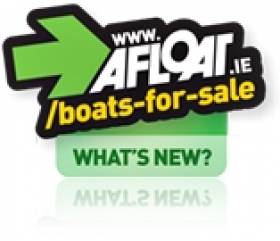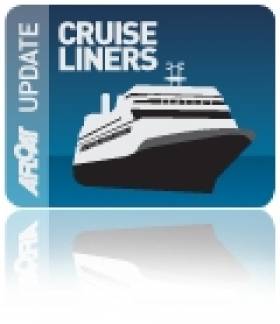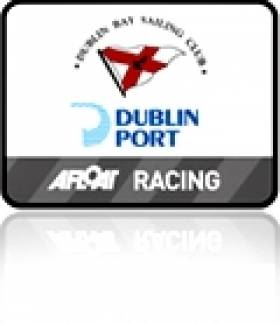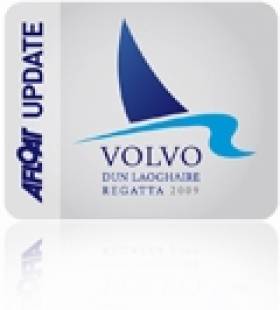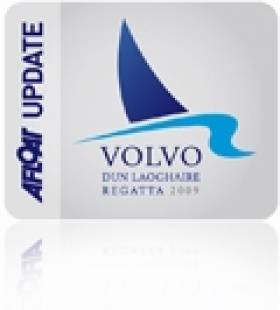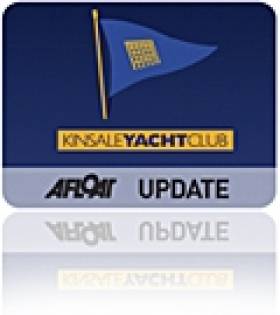Displaying items by tag: cruisers
#dbsc – BENETEAU 31.7 Echo- 1. Prospect (Chris Johnston), 2. Levante (M.Leahy/J.Power), 3. Extreme Reality (P.McSwiney/E.O'Rafferty)
BENETEAU 31.7 - 1. Prospect (Chris Johnston), 2. Levana (Jean Mitton), 3. Crazy Horse (F Heath & I Schuster)
CRUISERS 0 Echo - 1. Tsunami (Vincent Farrell), 2. Aurelia (Chris Power Smith), 3. Wow (George Sisk)
CRUISERS 0 - 1. Tsunami (Vincent Farrell), 2. Wow (George Sisk), 3. Aurelia (Chris Power Smith)
CRUISERS 1 - 1. Ruth (L Shanahan), 2. Jalapeno (P Barrington et al), 3. Something Else (J.Hall et al)
CRUISERS 1 Echo - 1. Ruth (L Shanahan), 2. Jalapeno (P Barrington et al), 3. Something Else (J.Hall et al)
CRUISERS 2 Echo - 1. Jester (Declan Curtin), 2. Antix (D Ryan), 3. Peridot (Jim McCann et al)
CRUISERS 2 - 1. Jester (Declan Curtin), 2. Peridot (Jim McCann et al), 3. Jambiya (Ryan & Lattimore)
CRUISERS 3 A Echo - 1. Hard on Port (F O'Driscoll), 2. Quest (B Cunningham), 3. Cries of Passion (B Maguire)
CRUISERS 3 A - 1. Quest (B Cunningham), 2. Hard on Port (F O'Driscoll), 3. Cries of Passion (B Maguire)
CRUISERS 3 B - 1. Asterix (Counihan/Meredith/Bushell), 2. Cacciatore (M Ni Cheallachain), 3. Taiscealai (B Richardson)
CRUISERS 3 B Echo - 1. Jiminy Cricket (M Tyndall), 2. Small Wonder (H Kelly), 3. Saki (Paget McCormack et al)
Combined Classes Echo - 1. White Mischief (Timothy Goodbody), 2. Rupert (R & P Lovegrove), 3. Jester (Declan Curtin)
Combined Classes - 1. White Mischief (Timothy Goodbody), 2. Rupert (R & P Lovegrove), 3. Jester (Declan Curtin)
DRAGON - 1. Diva (R.Johnson/R.Goodbody), 2. Phantom (D.Williams), 3. Zinzan (Daniel O'Connor et al)
FLYING FIFTEEN - 1. Ignis Caput (David Mulvey), 2. Betty (D & S Gorman), 3. Fflogger (Alan Dooley)
GLEN - 1. Glenmiller (P Cusack), 2. Glenmarissa (F.Elmes), 3. Glendun (B.Denham et al)
RUFFIAN 23 - 1. Shannagh (S.Gill/P.MacDiarmada), 2. Diane ll (A Claffey/C Helme), 3. Bandit (Kirwan/Cullen/Brown)
SB20 - 1. Venuesworld.com (Ger Dempsey), 2. Sin Bin (Michael O'Connor)
SHIPMAN - 1. Jo Slim (J.Clarke et al), 2. Euphanzel lll (M Muldoon), 3. Gusto (Heath, Miles, Crisp, Duggan)
SIGMA 33 - 1. White Mischief (Timothy Goodbody), 2. Rupert (R & P Lovegrove), 3. Leeuwin (H&C Leonard & B Kerr)
SIGMA 33 - 1. White Mischief (Timothy Goodbody), 2. Rupert (R & P Lovegrove), 3. Popje (Ted McCourt)
SQUIB - 1. Perfection (Jill Fleming), 2. Sidewinder (R&R Westrup), 3. Femme Fatale (V Delaney)
WHITE SAIL CRUISERS Echo - 1. More Mischief (Eamonn Doyle), 2. White Lotus (Paul Tully), 3. Just Jasmin (Philip Smith)
WHITE SAIL CRUISERS - 1. Persistence (C. Broadhead et al), 2. White Lotus (Paul Tully), 3. Act Two (Michael O'Leary et al)
#boatsforsale – A new season dawns and already in 2015, there's quite a bit of movement in the Irish boats for sale market after a number of slow years in the Irish second hand boat sector.
In leaner times, Irish brokers have been very successful in the export market and many boats on Irish marinas have been sold abroad but thankfully now the Irish domestic market is showing some green shoots.
It is the smaller, second–hand sailing yachts and cruisers that have been the first to feel the new economic winds at home. The Afloat boats for sale site has 200 sailing craft currently advertised ranging from small yachts and day sailors right up to blue water cruisers.
Here's a brief selection of the latest sailing cruisers on offer:
Westerly GK24 at €5,450 This Laurent Giles Designed Westerly Gk24 Is a flush-deckedproduction cruiser/racer With an 8hp Yanmar Diesel engine And four berths. She is in good condition for her year and comes with a number of sails. Broker Crosshaven boatyard says she is 'priced to sell' at €5,450. For more including photos click: Westerly GK24 at €5,450
Dehler 35 CR at €48,500 A very well cared for 1197 two cabin version, lightly used and well maintained. Excellent specification including warm air heating. If you are seeking an easily handled cruiser equipped for short handled sailing this might be her. For more including photos click: Dehler 35 CR
Beneteau Oceanis Clipper 311 at €49,000 This Oceanis Clipper 311 is an easily handled family cruiser with spacious accommodation in a three cabin lay out. Lifting winged keel and twin rudders allow for shallow anchoring in bays and harbours often denied to most keel yachts. Full suit of electronics to include colour plotter and wheel pilot. It is for sale through Leinster boats who have a range of boats for sale on the Afloat boats for sale site. For more including photos click: Beneteau Oceanis Clipper 311
Westerly Pembroke at €11,450 Tricia is a Westerly Pembroke, the fin keel version of the Centaur. She is number 48 of 97 built between 1976 and 1979. She has all the proven sea keeping qualities of the Centaur but with the greater windward performance and speed that the fin keel brings. Seller Pat Flming says 'I am only selling her as I'm now retired and want a larger boat for extended sailing'. Trish is the 'C' layout with the galley aft by the companion way and the cockpit locker. She has 4 berths, 2 in the forecabin, 1 single and 1 quarter berth in the saloon. Cabins have been relined, rewired & upholstery recovered. Rigging, sails & instruments replaced. For more including photos click: Westerly Pembroke
Tucker 35/36 at €6,750 This sailing yacht was home built by the late Jimmy Dwyer. She was originally launched in the mid 80 and used lightly for 4-5 years only. Wild Pigeon is sloop rigged, long deep keeled marine ply hard chined hull with alum mast /boom, main and roller genoa, Perkins 4108 engine with approx 50 hours only use. Basic internal fitout with internal/ external steering position, galley with 2 rings/grill, 6 berths, porta potti etc. Inventory also includes anchor chain warps fenders/lines. Advertiser Brendan Dunlevy says Wild Pigeon is easily sailed short handed, is suitable for inshore and offshore use and is sitting on her trailer in Dundalk . She is very competitively priced and ready for a new owner to customise and go. For more including photos click: Tucker 35/36
The Afloat boats for sale site has over 400 craft currently advertised ranging from sailing cruisers to motorboats, speedboats, dinghies and ribs. Check them all out HERE.
Queen Mary 2 kicks off the 2013 cruise liner season in Dun Laoghaire, Dublin early on Thursday, May 16 and she'll be visible off the Kish lighthouse at the entrance to Dublin Bay from before 6am onher journey from Greenock in Scotland.
The 151,400 tonnes giant vessel will make her way to the southside of the bay before anchoring in Scotsman's Bay, Sandycove for the day, approximately 1.8 nautical miles to the north east of Dun Laoghaire's East Pier.
Her passengers are mostly German with the cruise originating in Hamburg, the recent venue for the world's biggest port festival.
The liner will be at anchor in the bay all day on Thursday, departing at 17.30 and heading for Holyhead, on the far side of the Irish Sea.
Click for more on Queen Mary 2 ship and her visit to Dun Laoghaire
Hard on Port Wins Cruisers III DBSC Cruiser Challenge Event
In what at first glance looks like a repeat of the results from July's Volvo Dun Laoghaire Regatta there are familiar name at the top of the leaderboard after the weekend's Dublin Bay Sailing Club Cruiser Challenge contested by 70 boats from 7 classes.
So far overall results have yet to be published and only provisional results are appearing online.
As in July, the J24 Hard on Port (Flor O'Driscoll) was second to Supernova in the 16-boat Cruisers III IRC fleet, the biggest fleet of the combined classes event until the final race of the series when disaster struck for the Dubois Starflash desgin.

Wow tackles the breeze at the Cruiser Challenge. Photo: Gareth Craig. more on the Afloat Gallery here.
In the six boat Cruisers Zero fleet, Howth visitor Crazy Horse (Norbert Reilly) counting two firsts won by a margin of 5 points from Tiamat. Third was the new J111 Wow skippered by George Sisk.
Supernova is Overall Winner of Volvo Dun Laoghaire Regatta
Local success is being toasted in Dun Laoghaire tonight following the Volvo Dun Laoghaire regatta prizegiving this afternoon.
SCROLL DOWN FOR PRIZEGIVING PHOTOS by Gareth Craig.
The bulk of the major trophies were divided among sailors from the waterfront Dublin Bay yacht clubs or Howth at the end of four days of racing today.
The major overall prize went to the Class III IRC winner Supernova who produced three wins and three second places in a 38 boat fleet, the biggest class of the regatta. More on Supernova HERE.

The quarter tonner Supernova - Shining brightly on Dublin Bay
The biennial regatta is being hailed an enormous success both afloat and ashore as a combined fleet of 420 boats raced over nine courses and a range of conditions since racing began last Thursday from full gale to flat calm.
Supernova won but only after the third tie-break was applied against arch rival Hard on Port (Flor O'Driscoll). Both boats had equal points plus three wins and two second places apiece. Both had also discarded a second place and so the class, and the 2011 title, was decided on countback and who won the last race.
The cruisers zero IRC winner, in the biggest turn out of the class this year is Alan Chambers and Norbert Reilly's Crazy Horse. Steven Cowie's Beneteau 40, Zephyr from Royal Gourock was 4 points behind the Howth winner with the Dufour 42 Grand Cru from Clyde Cruising club three points further adrift.
In Cruiser one IRC the prize went to the National Yacht Club's Something Else (John & Brian Hall & Sue McDonnell). Second was Scotland's Carmen II (Paul Scutt/ Alan Jeffrey) and third Bengal Magic (John Moorehead/ Chris Ferres)
In class two Howth's Impetous lifted the IRC trophy from a fleet of 21. Second was Sligo traveller Conor Ronan sailing Ruthless, a Corby 25,
Third was the half tonner King One (David Cullen) from Howth.
In the one designs class champions prevailed in the SB3, the Sigma and the Flying fifteen classes.
In a new departure for the event Kitesurfing was added to the slate and the sport was showcased yesterday off Seapoint. Francios Colussi won the demonstration event.
The next Dun Laoghaire regatta is scheduled for early July 2013
The full breakdown of overall results is below.
Overall results VDLR 2011 (provisional and subject to protest)
OVERALL WINNER – Supernova (Sybil MacCormack/Ken Lawless/Pat Shannon),
IRC CLASS 0 - 1. Crazy Horse (Chambers/Reilly), 2. Elf Too (Christina Murray) 3. Grand Cru II (Jamie McGarry)
IRC CLASS 1 1. Something Else (John & Brian Hall & Sue McDonnell 2. Carmen II (Paul Scutt/ Alan Jeffrey) 3. Bengal Magic (John Moorehead/ Chris Ferres)
IRC CLASS 2 - 1. Impetuous (Fergal Noonan/Robert Chambers) 2. Ruthless (Conor Ronan), 3. King One (David Cullen)
IRC CLASS 3 - 1. Supernova (Sybil MacCormack/Ken Lawless/Pat Shannon), 2. Hard on Port (Flor O'Driscoll), 3. Scandal (Brian McDowell)
NON SPINNAKER 1 - 1. Tsunami (Vincent Farrell), 2. Lula Belle (Liam Coyne), 3. Persistance (Charles Broadhead/Jerry Collins/Ian Stuart)
NON SPINNAKER 2 - 1. Bite the Bullet (Colm Bermingham), 2. Voyager (Joe Carton), 3. Arwen (Philip O'Dwyer)
NON SPINNAKER DBSC CUP - ) 1. Arwen (Philip O'Dwyer), 3.Eden Park (Liam Farmer) 3. Nauti-Gal (John and Jason Crawford)
J109 - 1. Joker 2 (John Maybury) 2. Storm (Pat Kelly), 3. Jedi (Barratt/Austin/McGuinness)
J80 WELSH/IRISH CUP- 1. Ireland 1 (Geoff O'Donoghue), 2. Ireland 2 (Stephen Doherty), 3. Wales 1 (Kieron Iniman)
LASER SB3- 1. Sharkbait (Ben Duncan/Brian Moran), 2. TBC Aidan O'Connell, 3. BoMChickaWahWah (John O'Driscoll)
BENETEAU 31.7 1. Twister (Fletcher/Byers/Fair), 2. Flying Machine (Conor & Donal O'Gallagher),3. 30 Something (Kavanagh/Jones/Gaffney/Lubliner)
SIGMA 33 - 1.White Mischief (Tim Goodbody), 2. Popje (Ted McCourt), 3. Gwili Two (Dermot Clarke and Paddy Maguire)
RUFFIAN 23- . 1. Diane 2 (Alan Claffey) 2. Ruff Nuff (Derek & Carol Mitchell), 3. Ruff n'Ready (Cullen/Brown/Kirwan)
SHIPMAN- 1.Curraglass (John Masterson), 2. Whiterock (Henry M Robinson), 3. Lulu (Bob & Tom Galvin)
GLEN - 1. Glenluce (Donal &Richard O'Connor), 2. Pterodactyl (Roderick & David McCaffrey) 3 .Glenmarissa (Frank Elmes/Wilf Higgins)
FLYING 15- 1. Hy5ive (David Gorman), 2. The Gruffalo (Keith Poole) 3. Deranged (Alan Green)
DRAGON- 1.Phantom (Peter Bowring/David Williams), 2. Jaguar (Martin Byrne), 3. Susele (Michael Halpenny)
MERMAID - 1. Tiller Girl (Jonathon O'Rourke), 2. Endeavour (Roger Bannon), 3. Dolphin (James O'Toole)
SQUIB - 1. Toy for the Boys (Peter Wallace), 2. Femme Fatale (Joe O'Byrne/Vincent Delaney), 3. Perfection (Jill Fleming) (PROTEST PENDING THAT AFFECTS SECOND AND THIRD)
WATER WAG - 1. Little Tern (J Ross-Murphy) 2. Tortoise (William & Linda Prentice) 3. Molly (Cathy McAleavey)
WAYFARER- 1. Black Pear (David Wade) 2. Hofreki (Trevor Fisher) 3. Devil's Advocate (Richard Hartley)
FIREBALL- 1. El Rey Del Fuego (Francis Rowan) 3. Moon Monkey (Diana Kissane) 3. Lets Get Messy (Andy Boyle/Barry Hurley),
IDRA 14- 1. Delos II (Patrick O Neill) 2. Dunmoanin (Frank Hamilton), 3. Chaos (Julie Ascoop/Heather Keenan)
HOWTH 17- 1. Oona (Peter Courtney) 2. Aura (Ian Malcolm) 3. Leila (Roddy Cooper)
LASER RADIAL - 1. Pump It (Luke Murphy) 2. No Name (Declan Kickham), 3. No Name (Eoin Foley)
LASER STANDARD - 1. Fossa Too (Will Nesbitt), 2. No Name (Francis Barry) 3. Buster 3 (Garry O'Hare)
KITE BOARDERS 1. Francios Colussi 2. Jade O'Connor 3. Colm Murphy
Post-DL Regatta Event for Ultimate Bragging Rights
Competitors in this year's Volvo Dun Laoghaire Regatta are set to race for the ultimate bragging rights in a new bonus event.
The Royal Irish Yacht Club is proposing the one-day event on Sunday 31 July modelled on the ISA All Ireland Sailing Championship, where up to 16 teams will compete in a winner-takes-all contest with the prize of a significant voucher to go against their annual Dublin Bay Sailing Club subscription.
The best helms from Cruisers 1, 2 and 3, White Sails, Sigmas, Dragons, 31.7s and SB3s will compete using the symmetrical kite J80s in a round-robin fleet racing format.
Each participating DBSC class will have one team, selected by being the highest ranked DBSC boat in the Dun Laoghaire Regatta. Each class can decide if the team is chosen on a design, IRC or ECHO basis.
More details will be available in due course from the RIYC website.
Big Seas, Big Photos from Kinsale
Photographer Bob Bateman captured the sailing action from the final day of Kinsale's April league this afternoon and what a finale it turned out to be. Big seas, big winds for a classic Kinsale finish. The Squib class joined for good measure and are racing today and tomorrow for South Coast championship honours. Scroll down for Bob's photos.
More final day Cruiser photo action from Kinsale HERE
Tipperary Boat Dealer 'Closes the Doors'
Tipperary Boat dealer Marine Action Boats Ltd, based on the river Shannon at Birdhill has 'ceased operations' according to an announcement on the firm's website. The Sports boat dealership 'closed its doors' and ceased trading on December 31 2010, according to managing director, Tadhg Foley. Marine Action Boats were sole importers of Crownline Sports Cruisers for Ireland, according to the website. The sports boat section of the marine trade market has been one of the hardest hit by the economic downturn. The firm also handled brokerage, repairs and boat maintenance. The full text of the announcement is as follows:
"Despite great efforts from ourselves and our loyal team, we would like to announce that we have ceased operations at Marine Action Boats, and we are no longer trading. We would also like to thank all our customers and our suppliers for their support over the past decade".
Heritage Boat Association
The Heritage Boat Association’s aspiration is to protect, promote and celebrate the floating heritage on the inland waterways of Ireland. What's remaining of our Floating Heritage provides us with a direct link to the past and includes both commercial and pleasure craft that plied the inland waterways through the different eras of the canal, lake and river systems.
If you are interested in Irish barges, canal boats, lighters, old wooden boats, steam tugs, steam yachts, sailing barges, historic boats that have ended up on the Irish inland waterways or our work, do contact us.
So - what is so interesting about Heritage Boats?
A Heritage Boat is described as being consistent with the provisions of the Heritage Act 1995, to mean a boat over 25 years old which is of significance because of it’s intrinsic construction or because of it’s association with the commercial, cultural, economic, industrial, military, political, social or other history of the country.
'Celebrating Ireland's Floating Heritage'




























